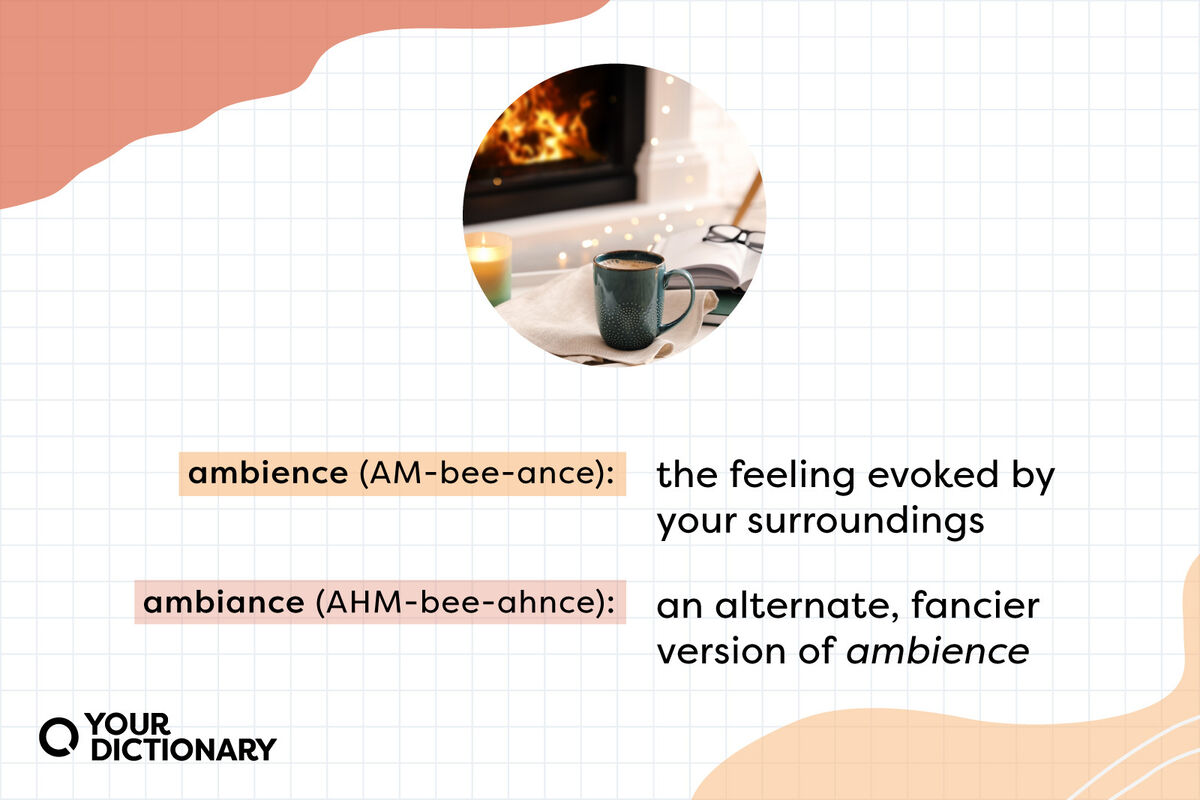
The soft lighting, the sweet aromas, the comfortable colors — there’s just something about this room that makes you feel relaxed. If only there were a word for such a feeling. Good news: There’s not just one word (ambience), there are two words (ambiance). But aren’t those just two different spellings of the same word? And if so, why do you say them differently?
Both “Ambience” and “Ambiance” Are Correct
Ambience and ambiance mean “the general feeling or atmosphere of a place.” They tend to have a positive connotation and describe a nice or pleasant feeling (“The fireplace creates a cozy ambience”), though they can refer to an undesirable atmosphere if needed (“Workplace gossip leads to a negative ambiance”).
Do You Use “Ambiance” in the UK?
At first glance, it may seem that ambience and ambiance is another British vs. American spelling issue. However, most English-speaking writers — including in the U.K. and in the United States — prefer ambience with an “e.” Ambiance is the French spelling of the word.
But They Have Different Pronunciations
When you’re writing, there’s not much difference between ambience and ambiance because they’re both correct spellings. But when you’re speaking, the difference is easy to hear.
- ambience - AM-bee-anse
- ambiance - AHM-bee-ahnce
Say them out loud. You may agree that ambience sounds straightforward, while ambiance has that certain je ne sais quoi — an indescribable feeling with a distinctly fancy (and French) flair, thanks to the long /a/ sounds.
“Ambience” Is More Popular (and Older)
Ambience and ambiance come from the Latin ambiens, meaning “going around.” Note the “e” in ambiens, which led to the 18th-century English word ambience to describe the environment around you.
Ambiance is the French word for the same concept, but it surfaced in English as a French loanword in the early 20th century — even though it already existed as ambience. Today, ambience and ambiance have similar usage online (although every writer tends to have their favorite.)
How To Use “Ambience” and “Ambiance” in a Sentence
So how do you use ambience and ambiance as nouns to describe your surroundings? Depending on your preference (and desired level of fanciness), you can use either of them. For example:
- The candlelight created a romantic ambience for our date.
- The candlelight created a romantic ambiance for our date.
- Adding fresh flowers to the living room really gives our home a welcoming ambience.
- Adding fresh flowers to the living room really gives our home a welcoming ambiance.
- The Marquez family enjoyed the warm ambience of their cozy mountain cabin.
- The Marquez family enjoyed the warm ambiance of their cozy mountain cabin.
While you may not be able to see the differences easily, try reading them out loud. The sentences with ambiance sounds just a bit more elegant — so if that’s the tone you’re going for, choose ambiance. Otherwise, ambience will suit your needs just fine.
What About “Ambient” vs. “Ambiant”?
If ambience and ambiance are somewhat interchangeable, shouldn’t their adjective forms be the same as well? The answer is no — ambient is an English word, while ambiant is its French translation, not an English equivalent.
You use ambient to describe something going on around you. For example:
- It was difficult for Marcia to sleep with all the ambient noise.
- The restaurant lowered the ambient lighting to create a more intimate atmosphere.
- Ambient music played from various stories as we walked along the city streets.